Springtime photos from Tonawanda Wildlife Management Area

This photo of black-crowned night heron was taken by Claudia along the Feeder Ditch on the Tonawanda Wildlife Management Area. The Tonawanda WMA borders the western perimeter of the Iroquois National Wildlife Refuge while Oak Orchard Wildlife Management Area lies to the east. Together they compromise more than 19,000 acres of wildlife habitat that beckons to the springtime outdoor enthusiast, be it hiking, bird watching or nature photography. And so it was that Claudia and I spent several days this spring partaking of all three activities at the three locations.
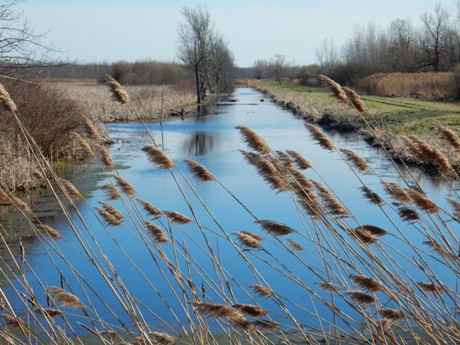
Our takeoff point for Tonawanda WMA -- facing west on the Feeder ditch.
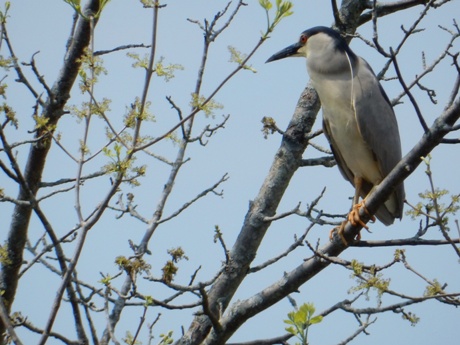
The black-crowned night heron was hidden from our view by tall reeds as it stalked the shallows. Finally aware of our presence it made quite ruckus as it took flight, emitting several loud guttural squawks, literally one after the other.
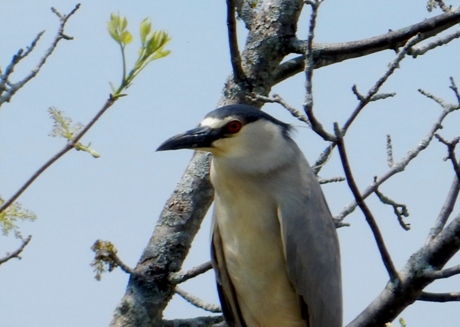
Hard to say who was more startled, my wife and I or the heron. Anyway, as disturbed as it seemed to be, we were surprised when the heron alit in a tree and allowed us to take its picture.
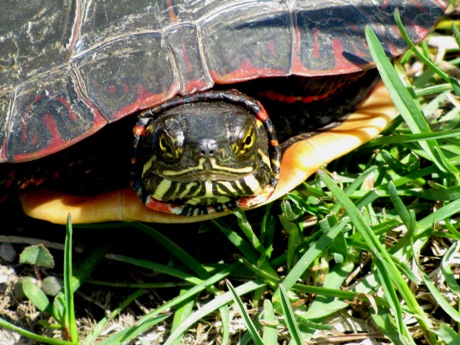
It's that time of year when female turtles are making their annual trek to deposit eggs. This gal doesn't look so pleased with the delay, does she?

I really enjoy wild mustard greens and having come across an abundance of it atop one of the berms, the day's hike turned out to be a bit longer than planned.
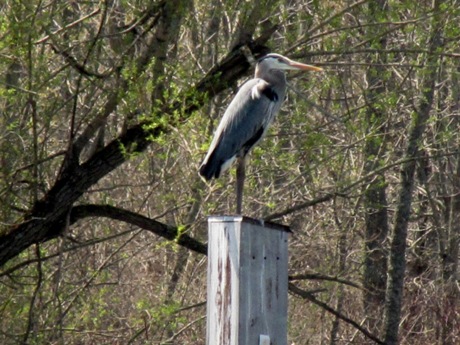
A great blue heron perched atop wood duck nesting box
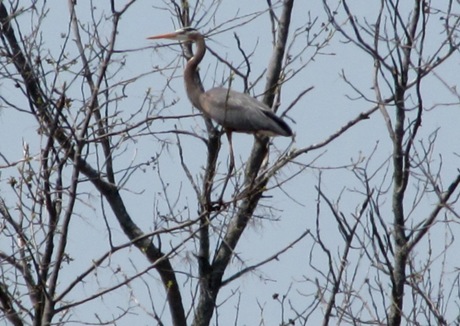
A great blue heron perched in the tree tops.....saw more blue herons on this day than ever before, most of which were on the wing.
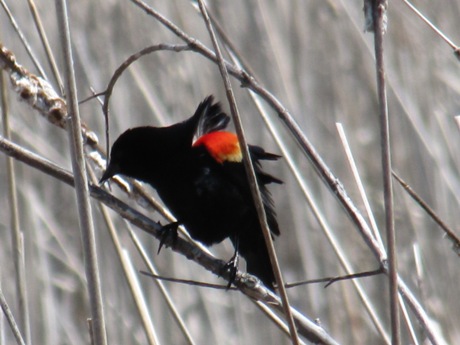
A gust of wind reveals a red-winged blackbird's scarpular

To be sure, there is quite a history behind what the locals refer to as, "the Feeder Ditch."
